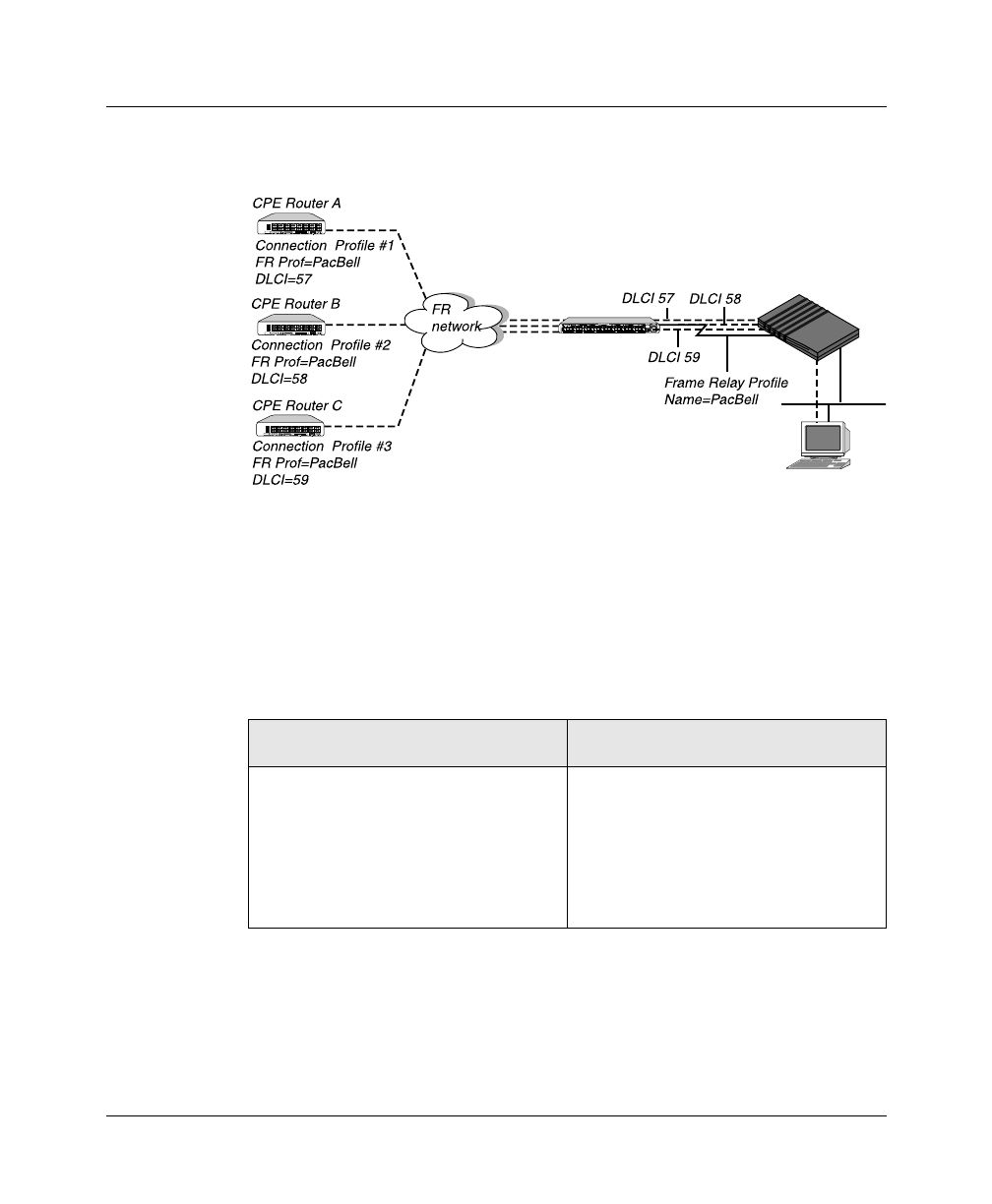User`s guide
Table Of Contents
- Ascend Customer Service
- How to use this guide
- What you should know
- Documentation conventions
- How to use the on-board software
- Manual set
- Configuring WAN Connections
- Configuring IP Routing
- Introduction to IP routing on the Pipeline
- Managing the routing table
- Parameters that affect the routing table
- Static and dynamic routes
- Configuring static routes
- Specifying default routes on a per-user basis
- Enabling the Pipeline to use dynamic routing
- Route preferences
- Viewing the routing table
- Fields in the routing table
- Removing down routes to a host
- Identifying Temporary routes in the routing table
- Configuring IP routing connections
- Ascend Tunnel Management Protocol (ATMP)
- IP Address Management
- Connecting to a local IP network
- BOOTP Relay
- DHCP services
- Dial-in user DNS server assignments
- Local DNS host address table
- Network Address Translation (NAT) for a LAN
- Configuring IPX Routing
- How the Pipeline performs IPX routing
- Adding the Pipeline to the local IPX network
- Working with the RIP and SAP tables
- Configuring IPX routing connections
- Configuring the Pipeline as a Bridge
- Defining Filters and Firewalls
- Setting Up Pipeline Security
- Pipeline System Administration
- Pipeline 75 Voice Features
- IDSL Implementations
- APP Server utility
- About the APP Server utility
- APP Server installation and setup
- Configuring the Pipeline to use the APP server
- Using App Server with Axent SecureNet
- Creating banner text for the password prompt
- Installing and using the UNIX APP Server
- Installing and using the APP Server utility for DO...
- Installing and using the APP Server utility for Wi...
- Installing APP Server on a Macintosh
- Troubleshooting
- Upgrading system software
- What you need to upgrade system software
- Displaying the software load name
- The upgrade procedure
- Untitled

Configuring WAN Connections
Configuring Frame Relay connections
1-26 Preliminary January 30, 1998 Pipeline User’s Guide
connections can support bridging and routing, so the Pipeline can forward any
type of protocol traffic from the local network onto the Frame Relay network.
Figure 1-2. Gateway connections to the Frame Relay network
Connection profiles #1, #2, and #3 use Frame Relay encapsulation (RFC 1490)
and include both a DLCI number for the logical link and the name of the Frame
Relay profile for the nailed connection. The Frame Relay profile defines a nailed
connection between the Pipeline and a Frame Relay switch. The Connection
profiles and the Frame Relay profile in this example are defined below:
Table 1-1. Frame Relay and gateway profiles
Connection profiles (gateway) Frame Relay profile
Station=CPEA
Active=Yes
Encaps=FR
Encaps options...
FR Prof=PacBell
DLCI=57
Name=PacBell
Active=Yes
Call Type=Nailed
Nailed Grp=1
Data Svc=64K
Link Mgmt=T1.617D...
NO LINK










